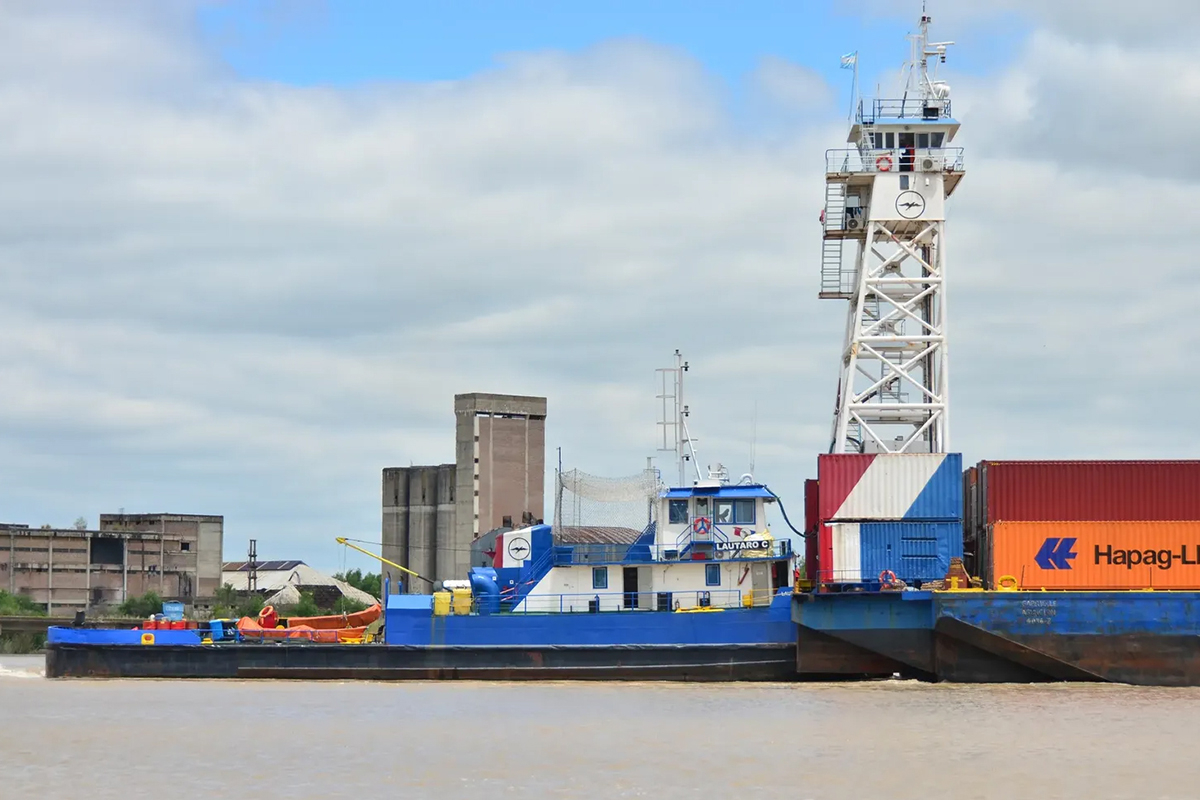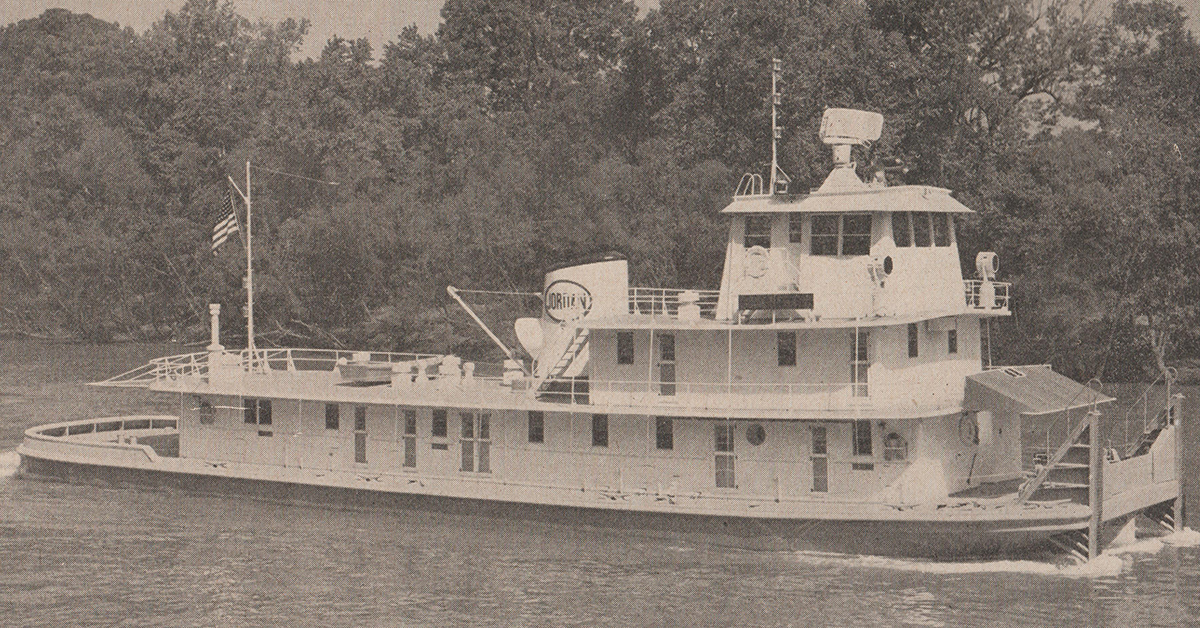The Nashville Bridge Company, Nashville, Tenn., has long been renowned as a builder of stylish vessels that provided their owners with many years of service. Nashville Bridge, known as simply “Nabrico” by many on the rivers, had origins stretching back to 1902, when Arthur J. Dyer formed the Nashville Bridge and Construction Company, with a focus on building bridges. In 1915, the company entered marine construction by building a small floating derrick hull for the U.S. Engineer Department.
Nabrico continued to turn more effort toward crafting vessels for the inland waterways. Nabrico vessels were soon noted for how well they performed. Some companies, such as Chotin, Hougland and Ingram, would rarely build a boat at another yard. In addition to the towboats the craftsmen at Nabrico built, tank barges designed and built there were known for the efficient characteristics of the “spoonbill” rake placed on the bow pieces.
The May 26, 1951, issue of The Waterways Journal carried a feature story on page 7 on the latest Nabrico towboat. The piece was written by Adeline King and described the new Winchester, constructed for Jordan River Line Inc. of New Orleans. The Winchester was twin screw, with a hull measuring 124 feet by 27.6 feet, and it boasted 1,800 hp. from a pair of GM 12-567A diesel engines coupled to Falk gears. The boat was reported to be similar to the Cherrystone, built by Nabrico in 1949 for the same company, but it was longer by some 8 feet.
The story told of a “shakedown run” for the Winchester that took place on May 18, 1951, described as “a bright afternoon of torrid temperature and faultless sky.” Capt. Harry B. Dyer of Nabrico was at the controls of the boat as “she moved forward with such grace and quiet power that those aboard were hardly aware that they had traveled to midstream.” Guests aboard included Arthur J. Dyer of Nabrico (and father of Harry J.); O.H. Ingram, Capt. Nelson M. Broadfoot, H.C. Kilgore and Bill Gee of Ingram Products Company; Col. Henry Walsh of the Nashville District Engineer; Cdr. Clay Clifton of the U.S. Coast Guard’s Nashville marine inspection staff; and Bob Brown of Jordan River Line.
The Winchester was named for the town of Winchester, Va., birthplace of Harry Jordan of the owning firm. According to the WJ story, the boat was “built of keen workmanship and durable materials” and was the first of a new class of Nabrico-built towboats. It had a full lower cabin, with a shorter upper cabin surmounted by the distinctive Nabrico-style pilothouse. A single smokestack was on the roof, aft of the upper cabin. The cabins contained quarters for 18 people, and the galley, lounge and pilothouse were set up with “previously tried and proved arrangements and equipment.” Besides radar, the pilothouse was equipped with a Sperry Gyro Compass for use with an “automatic heading control.”
Nabrico also turned out a three-piece unit for Jordan made up of barges that were 264 feet long and 50 feet wide. The lead barge was equipped with a bow steering unit. Jordan operated the boat and tow until 1955, when the floating assets of the company (including those of River Company Inc. that operated the Cherrystone) were sold to Ashland Oil & Refining Company (AO&R), Ashland, Ky. AO&R did not change the names of the two boats, but the company did paint them in the standard AO&R colors of white cabins with black trim, the stack a bright red with black top and a white “AO” on the sides. The radio call sign was WD 3802.
In 1960, the Winchester was sold to Tennessee Towing Inc., Memphis, Tenn., and renamed Cotton Queen. The address for Tennessee Towing later became Breaux Bridge, La., and the principal owner was Capt. Eno Dupuis. The Cotton Queen continued working for AO&R (and after 1966, for Ashland Oil Inc.) for some 20 years. In 1982, the vessel was sold to Igert Inc., Paducah, Ky. In 1983, the boat was repowered, or the engines upgraded, to GM 12-645s. It then had 2,800 hp.

In 1987, the boat was sold to Mays Marine Service Inc., Clinton, Ky., and renamed Peggy Mays. In 1997, it was sold to Madison Marine Inc. and renamed Julie J. It was later leased (and then sold in 2000) to JAR Assets Inc. and operated by Florida Marine Transporters Inc., Mandeville, La. For the next 14 years, the Julie J was seen towing for Florida Marine throughout the inland river system.
In 2014, the Julie J was sold to MGL Paraguay S.A. The vessel underwent an extensive rebuild and was modified to tow a barge loaded with containers. Now named Lautaro C, it is still running in South America nearly 75 years after the “shakedown run” it made on May 18, 1951, with “grace and quiet power.”
Featured image caption: The new Winchester as pictured in the May 26, 1951, issue of The Waterways Journal. (From the author’s collection)




